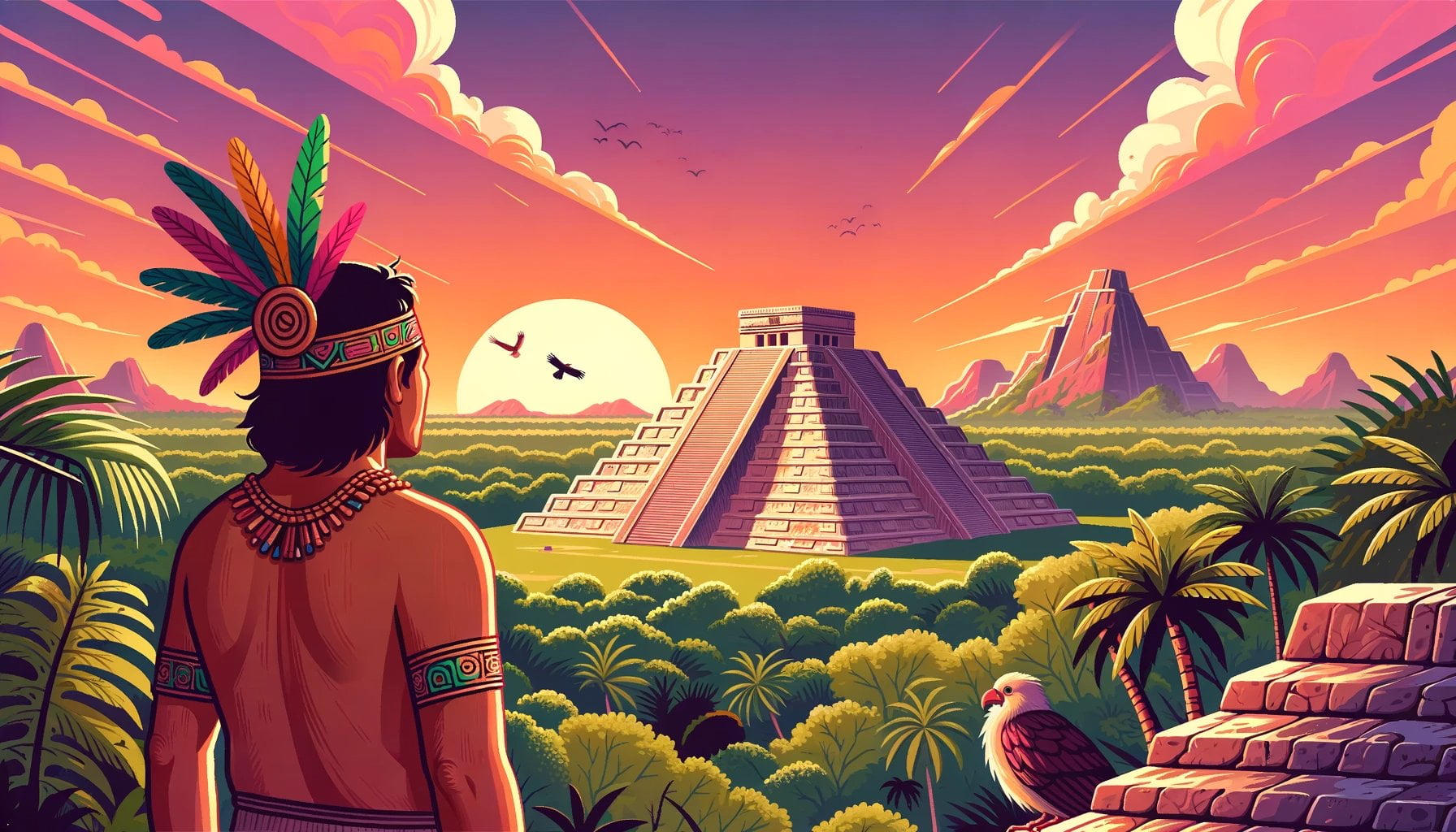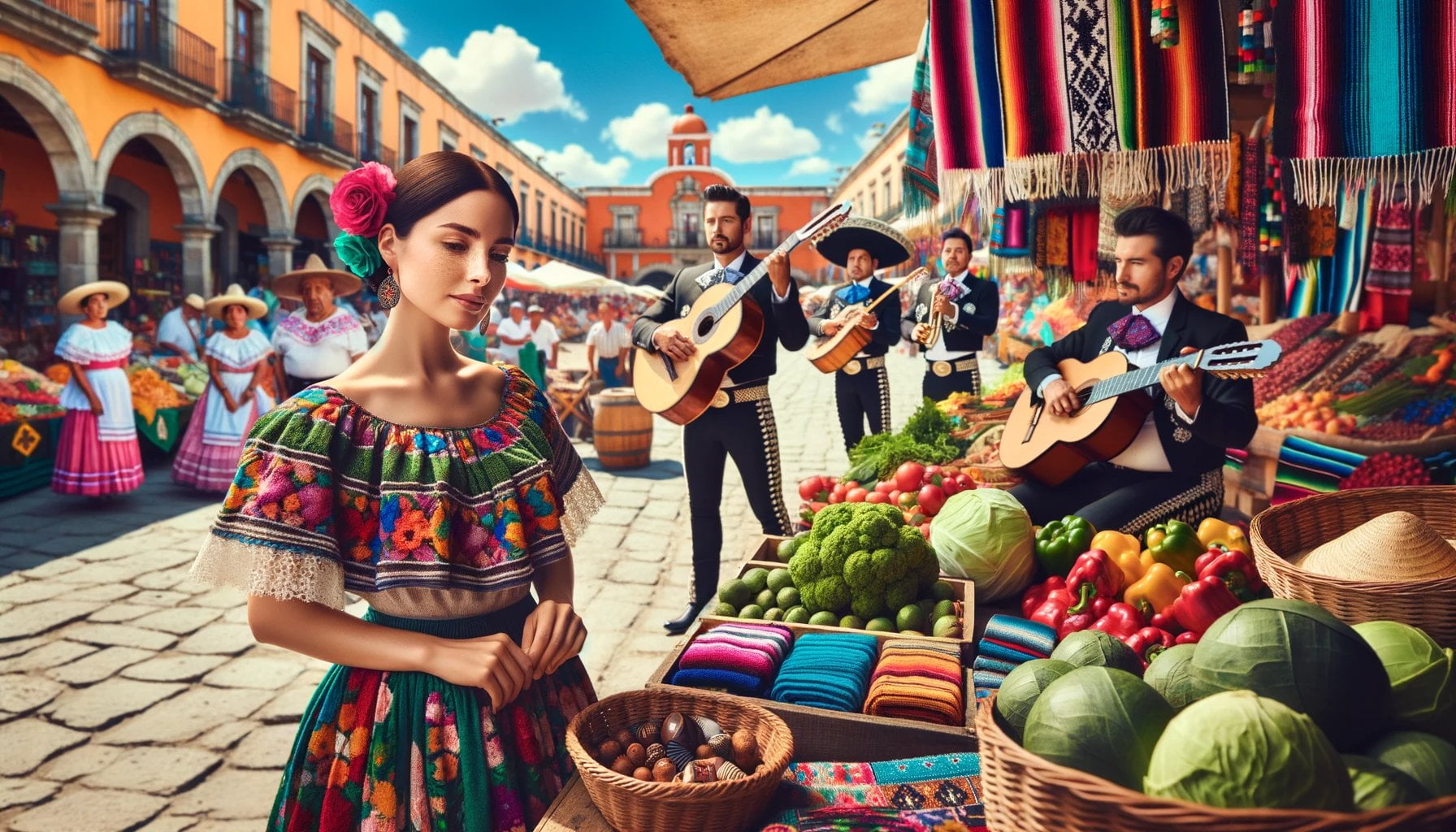Mexico, a country renowned for its vibrant tapestry of cultural traditions, stunning landscapes, and ancient ruins, offers a plethora of famous attractions that captivate and enthrall visitors from around the world. From the breathtaking beaches of Cancun and the vibrant festivals of Oaxaca to the enchanting art scene of Mexico City, this diverse country is a treasure trove of unforgettable experiences. With this article, we invite you to delve into the depths of Mexico’s rich history, savor its diverse cuisine, and revel in the warmth of its cultural traditions, as we uncover the allure and magic that make Mexico a beloved and sought-after destination.
Key Takeaways:
- Mexico is famous for its delicious cuisine, including tacos, burritos, enchiladas, and more. The country also exports tequila, coffee, peppers, and chocolate.
- Mexico boasts stunning beaches and resort towns like Cancún, Cabo San Lucas, and Acapulco, which attract tourists from around the world.
- Mexico is home to impressive monuments and ancient ruins, such as Chichen Itza, Teotihuacan, and Palenque, providing a glimpse into the country’s rich history and ancient civilizations.
- Mexico is renowned for its vibrant culture and colorful festivals, including Día de los Muertos, Cinco de Mayo, and Guelaguetza, showcasing traditions, music, and art.
- Mexico’s history dates back thousands of years and includes ancient civilizations like the Maya and Aztecs, as well as significant events like the Mexican Revolution. Exploring Mexico allows visitors to learn about its complex history and colonial era.
For more information on the above topics and to explore other aspects of Mexico, you can refer to the following sources:
- Mexico is Known For Its Eventful History. heyexplorer.com
- What is Mexico Known For? 51 Famous Things About Mexico. letstraveltomexico.com
What is Mexico famous for?

Mexico is a country that captivates travelers with its vibrant tapestry of attractions and cultural traditions. From its amazing cuisine to its stunning beaches, ancient ruins, colorful festivals, and rich history, Mexico has something for everyone. Let’s explore what makes Mexico famous and why it continues to be one of the most beloved destinations in the world.
Amazing Food that Delights the Palate
Mexico is famous for its delicious cuisine that tantalizes taste buds and leaves a lasting impression. From the iconic street tacos and mouthwatering burritos to flavorful enchiladas and traditional mole dishes, Mexican food is a celebration of flavors. The country is also known for exporting tequila, coffee, peppers, and chocolate, which have become staples of global gastronomy.
Stunning Beaches and Resort Towns
Mexico’s coastline is a haven for beach lovers and sun-seekers. Cancún, Cabo San Lucas, and Acapulco are just a few examples of the many stunning beaches and resort towns that attract tourists from around the world. With crystal-clear turquoise waters, powdery white sand, and a vibrant beach culture, these destinations offer the perfect escape for relaxation and fun.
Impressive Monuments and Ancient Ruins
One of Mexico’s most significant attractions lies in its impressive monuments and ancient ruins. From the iconic Chichen Itza, Teotihuacan, and Palenque, these historical sites showcase the architectural brilliance and cultural heritage of ancient civilizations. Stepping into these ancient ruins allows visitors to travel back in time and gain insight into Mexico’s rich history and ancient civilizations.
Vibrant Culture and Colorful Festivals
Mexico’s culture is a vivid tapestry of traditions, music, and art. The country is renowned for its vibrant culture and colorful festivals that showcase its diversity and heritage. Día de los Muertos, Cinco de Mayo, and Guelaguetza are just a few examples of the many celebrations that take place throughout the year. These festivals provide an immersive experience where visitors can witness traditional dances, enjoy lively music, taste authentic cuisine, and embrace the warmth of Mexican traditions.
Rich and Fascinating History
Mexico’s history is a fascinating journey that dates back thousands of years. The country is renowned for its ancient civilizations like the Maya and Aztecs and significant events like the Mexican Revolution. Exploring Mexico allows visitors to immerse themselves in its complex history and colonial era, revealing stories of great empires, clashes of civilizations, and the resilience of the Mexican people.
In conclusion, Mexico is famous for its amazing food, stunning beaches, impressive monuments, vibrant culture, and rich history. Whether you are a food lover, nature enthusiast, history buff, or cultural explorer, Mexico offers a world of experiences that will leave you awe-struck. Embark on your own Mexican adventure and discover why this country has captured the hearts of travelers from around the globe.
For more information on the above topics and to explore other aspects of Mexico, you can refer to the following sources:
- Mexico is Known For Its Eventful History. heyexplorer.com
- What is Mexico Known For? 51 Famous Things About Mexico. letstraveltomexico.com
Mexico is a country full of fascinating facts and hidden treasures. If you’re curious to learn more, click here to discover 4 intriguing facts about Mexico in our latest article. 4 facts about mexico
Want to know what makes Mexico so fun and exciting? Check out this article to find out a fun fact about Mexico that will surely surprise you! What is a fun fact in Mexico?
Are you interested in learning about the rich culture and history of Mexico? Click here to explore 3 important facts about Mexico that you should know. What are 3 important facts about Mexico?
Stunning Natural Landscapes and Biodiversity
Mexico is a country blessed with stunning natural landscapes and a remarkable biodiversity. Its varied topography, ranging from deserts and mountains to tropical rainforests and coastal areas, creates a diverse ecosystem that supports a rich variety of flora and fauna (Geolacgeo.com). In fact, Mexico is considered one of the world’s megadiverse countries, making it a true haven for nature lovers (Biodiversity in Mexico | Biodiversity Facts).
The unique geographic location of Mexico presents it with a fantastic blend of distinct ecozones, contributing to awe-inspiring natural wonders across the country (Tripsavvy). One such marvel is the Copper Canyon, also known as the Barrancas del Cobre, which unveils rugged and stunning natural scenery that will leave you in awe (TripSavvy). Beyond this grand canyon, Mexico boasts other captivating natural attractions, such as the Sian Ka’an Biosphere Reserve, Baja California, the Monarch Butterfly Reserves, and the cenotes of Quintana Roo (Jetline Cruise).
However, despite Mexico’s abundance of biodiversity and natural beauty, it faces threats due to human actions. Astonishingly, 28.7% of land areas in Mexico have lost their natural ecosystems, according to a study conducted by the Ministry of Environment and Natural Resources (Biodiversity in Mexico | Biodiversity Facts). It is crucial to prioritize the conservation of Mexico’s megadiverse ecosystems to preserve its extraordinary biodiversity (World Bank Group).
In conclusion, Mexico truly stands out as a country renowned for its stunning natural landscapes and incredible biodiversity. From the picturesque Copper Canyon to the captivating Sian Ka’an Biosphere Reserve, there are countless natural wonders waiting to be explored in this remarkable country.
Key Takeaways:
– Mexico boasts incredible biodiversity and diverse landscapes.
– The country’s varied topography contributes to stunning natural areas and wonders.
– The Copper Canyon, Sian Ka’an Biosphere Reserve, and cenotes of Quintana Roo are just a few examples of Mexico’s remarkable natural attractions.
– Preserving Mexico’s natural ecosystems is crucial for the conservation of its biodiversity.
SOURCES:
– Geolacgeo.com: Mexico: Natural Landscape
– Biodiversity in Mexico | Biodiversity Facts: Biodiversity in Mexico
Festivals and Celebrations that Showcase Mexican Culture
Mexican culture is vibrant and diverse, and one of the best ways to experience its richness is through its festivals and celebrations. From honoring the departed to commemorating historical events, these events offer a window into the heart and soul of Mexico. Let’s explore some of the most iconic and cherished festivals that showcase Mexican culture.
Dia de los Muertos (Day of the Dead)
Celebrate the spirits of the departed in a colorful and lively way
One of the most important and traditional celebrations in Mexico, Dia de los Muertos, is a vibrant holiday that honors and remembers deceased loved ones. Taking place on November 1st and 2nd, it is a time when families come together to create altars adorned with photos, flowers, and favorite foods of their ancestors. They visit gravesites, where they pay their respects and celebrate the lives of those they have lost. The streets come alive with music, dancing, and parades, while intricate sugar skull decorations add to the festive atmosphere.
Cinco de Mayo
Commemo-rating a remarkable victory with parades, music, and Mexican delights
Cinco de Mayo is a popular Mexican holiday that commemorates the Battle of Puebla, where Mexico achieved a decisive victory over the French army. Celebrated on May 5th, the day is marked with parades, traditional music, and dancing. Mexican cuisine takes center stage, with the tantalizing aromas of tacos, enchiladas, and other mouthwatering dishes filling the air. It is a day to celebrate Mexican heritage and pride, both in Mexico and within Mexican communities around the world.
Mexican Independence Day
A nationwide extravaganza filled with fireworks, parades, and cultural performances
Mexican Independence Day is celebrated on September 16th and marks the anniversary of the country’s independence from Spain in 1810. It is a day of immense national pride and is celebrated with grandeur throughout Mexico. The festivities begin on the evening of September 15th with the iconic “Grito de Dolores” ceremony, where the president reenacts Miguel Hidalgo’s call to arms. Fireworks light up the sky, parades fill the streets, and music and dancing create an atmosphere of joy and unity.
Semana Santa and Pascua
A time of reflection, prayer, and colorful processions
Semana Santa, or Holy Week, is a significant religious observance leading up to Easter. It is a time for reflection and prayer, with many Mexicans participating in religious processions that reenact the final moments of Jesus Christ’s life. The atmosphere is somber and solemn, but there is also a sense of anticipation for the joyous celebration that follows. Pascua, or Easter, is a time of feasting and celebration, with families coming together to share a meal and break confetti-filled cascarones (eggs).
Las Posadas
Experience the spirit of Christmas with vibrant processions, carols, and piñatas
Las Posadas is a cherished Christmas tradition that reenacts Mary and Joseph’s search for a place to stay in Bethlehem. Celebrated from December 16th to 24th, families and communities come together to go from house to house, singing carols and reenacting the scene. The celebration ends with a joyous feast and the breaking of piñatas, releasing a burst of candies and treats for everyone to enjoy.
New Year’s Eve
Bid farewell to the old year and welcome the new year with hope and joy
New Year’s Eve, or Nochevieja, is a time of festive parties, fireworks, and family gatherings. Mexicans bid farewell to the old year, often leaving behind any negative experiences and looking ahead with hope and joy. Celebrations take place in homes, town squares, and city centers, with music, dancing, and laughter ringing in the new year.
Key Takeaways:
- Dia de los Muertos is a vibrant and colorful celebration that honors deceased loved ones.
- Cinco de Mayo commemorates the Battle of Puebla and is celebrated with parades and delicious Mexican cuisine.
- Mexican Independence Day is marked by grand celebrations, including fireworks, parades, and the iconic “Grito de Dolores” ceremony.
- Semana Santa and Pascua are a time of reflection and religious observance leading up to Easter, followed by feasting and celebration.
- Las Posadas reenact the search for a place to stay in Bethlehem and involve processions, carols, and the breaking of piñatas.
- New Year’s Eve is a time to bid farewell to the old year and welcome the new year with hope and joy.
Sources:
- Mexico Travel Blog: Mexican Holidays and Traditions
- Layer Culture: Mexican Traditions: Customs and Family
World-renowned Art and Cultural Heritage
Mexico is a country that boasts a rich history and diverse cultural heritage. From its ancient ruins to its vibrant art scene, Mexico is renowned for its world-class art and cultural contributions. In this article, we will delve into Mexico’s famous attractions and uncover the essence of its world-renowned art and cultural heritage.
The UNESCO World Heritage Sites of Mexico
Mexico is home to an impressive collection of UNESCO World Heritage sites, showcasing the country’s deep historical and cultural significance. With 35 sites in total, including 27 cultural sites and 6 natural sites, these locations are vital in preserving Mexico’s unique heritage[^1^][^2^]. Each site offers a glimpse into the rich tapestry of Mexican history, architecture, and traditions.
The Vibrant Mexican Art Scene
Mexican art is renowned for its vibrancy and uniqueness, serving as a representation of Mexico’s rich culture, history, and traditions. From world-famous artists like Diego Rivera and Frida Kahlo to contemporary art movements, Mexico’s art scene continues to captivate and inspire art enthusiasts around the globe[^3^].
The works of Diego Rivera, known for his larger-than-life murals, depict Mexico’s revolutionary spirit and social struggles. Frida Kahlo, an iconic figure in the art world, used her paintings to express her personal experiences and challenge societal norms. Their contributions have not only influenced art but have also shed light on disability awareness and bisexual representation.
Exploring Mexico City: A Cultural Hub
Mexico City, the country’s capital, is a cultural hub that showcases Mexico’s rich history and artistic heritage. The city is home to impressive architectural marvels, such as the towering Aztec temples and the largest Cathedral in the Americas. One of the most significant cultural landmarks is el Palacio de Bellas Artes, the beautiful arts palace, which houses stunning murals and hosts various artistic performances. Mexico City serves as a mecca for art enthusiasts, where they can immerse themselves in the vibrant art scene and explore the city’s numerous galleries and museums[^3^].
Ancient Rock Paintings: A Glimpse into the Past
Mexico is also known for its ancient rock paintings, which offer valuable insights into how ancient civilizations related to their surroundings. These well-preserved paintings, found in remote locations and aided by the dry weather, provide a window into the past and shed light on Mexico’s ancient cultures and their relationship with nature[^4^].
Xochimilco: A Cultural Heritage Site
Xochimilco, a neighborhood located within Mexico City, is recognized as a UNESCO Cultural Heritage site due to its rich history, colonial art, traditions, and natural environment[^5^]. Visitors can explore the enchanting floating gardens and take a colorful trajinera boat ride along the ancient canals. Xochimilco’s cultural heritage is celebrated through various festivals and rituals, keeping alive Mexico’s vibrant traditions.
Key Takeaways:
- Mexico is home to 35 UNESCO World Heritage sites, reflecting its rich cultural and historical heritage[^1^].
- Mexican art, represented by renowned artists like Diego Rivera and Frida Kahlo, showcases the country’s unique culture and history[^3^].
- Mexico City serves as a cultural hub with its impressive architectural landmarks and vibrant art scene[^3^].
- Ancient rock paintings in Mexico provide valuable insights into the past and ancient civilizations’ relationship with their environment[^4^].
- Xochimilco, a UNESCO Cultural Heritage site, highlights Mexico’s rich history, colonial art, traditions, and natural beauty[^5^].
Sources:
[^1^]: List of World Heritage Sites in Mexico. Wikipedia.
[^2^]: 35 Must-See UNESCO World Heritage Sites in Mexico. Homeschool Spanish Academy
[^3^]: Mexico’s Vibrant Art Scene Benito’s Mexican.
[^4^]: Rock Paintings in Mexico: A Window into the Past Homeschool Spanish Academy.
[^5^]: Xochimilco Cultural Heritage Xochimilco Official Website.

FAQ
Q1: What is Dia de los Muertos and how is it celebrated in Mexico?
A1: Dia de los Muertos, or Day of the Dead, is a vibrant and colorful holiday in Mexico that honors and remembers deceased loved ones. Families create altars with photos, flowers, and favorite foods of their ancestors, and they visit gravesites to pay their respects. It is celebrated on November 1st and 2nd with traditional ceremonies, music, dancing, and parades.
Q2: What is the significance of Cinco de Mayo in Mexico?
A2: Cinco de Mayo is a Mexican holiday that commemorates the Battle of Puebla, where Mexico achieved a significant victory against the French army. It is celebrated on May 5th and is associated with parades, traditional music, dancing, and the consumption of Mexican food and drinks. While it is an important day in Mexican history, it is not a major national holiday like Mexican Independence Day.
Q3: How is Mexican Independence Day celebrated in Mexico?
A3: Mexican Independence Day is celebrated on September 16th and marks the anniversary of Mexico’s independence from Spain in 1810. It is a nationwide celebration filled with fireworks, parades, music, dancing, and the iconic “Grito de Dolores” (Cry of Dolores) ceremony, where the president reenacts Miguel Hidalgo’s call to arms. The day is filled with national pride and is one of the most important holidays in Mexico.
Q4: What are Semana Santa and Pascua in Mexico?
A4: Semana Santa, also known as Holy Week, is an important religious observance in Mexico that leads up to Easter. It is a time of reflection, prayer, and processions. Pascua, or Easter, is the celebration of the resurrection of Jesus Christ and is marked by religious ceremonies, feasts, and the breaking of cascarones (confetti-filled eggs). Both Semana Santa and Pascua hold great religious significance in Mexico.
Q5: What is Las Posadas and how is it celebrated in Mexico?
A5: Las Posadas is a traditional Christmas celebration in Mexico that reenacts Mary and Joseph’s search for a place to stay in Bethlehem. It is celebrated from December 16th to 24th, where people go from house to house, singing carols and reenacting the scene. The celebration ends with a feast and the breaking of piñatas. Las Posadas is a joyful and festive tradition that brings communities together during the holiday season.
















